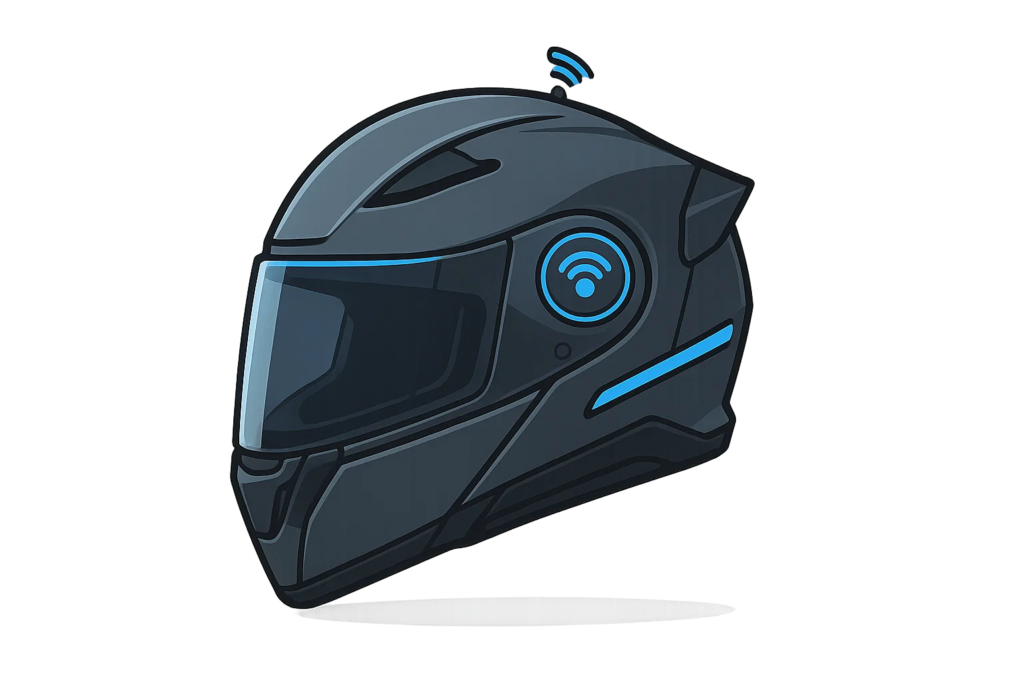Smart Helmets: The Future of Safe Riding for Two-Wheelers and Bikers
Table of Contents
Introduction
As cities get smarter and roads get faster, helmets are evolving too. No longer just protective gear, smart helmets are emerging as powerful tech-enabled companions for two-wheeler riders and bikers. Equipped with features like Bluetooth communication, built-in cameras, navigation, crash detection, and even augmented reality, smart helmets are redefining what safety and connectivity mean on the road.
Whether you’re a daily commuter or a long-distance rider, the smart helmet is a clear glimpse into the future of intelligent mobility.
What Are Smart Helmets?
Smart helmets are advanced versions of traditional helmets that come integrated with digital technology and IoT (Internet of Things) components. Designed specifically for motorcycles, scooters, and electric bikes, these helmets aim to enhance safety, navigation, entertainment, and rider awareness.
They typically include:
- Voice command integration
- GPS navigation
- Crash sensors and emergency alerts
- Rear-view or 360-degree cameras
- Built-in microphones and speakers
- Heads-up displays (HUDs)
With these features, smart helmets are not just passive protection—they’re interactive tools built for the modern road.
Key Features Driving the Smart Helmet Revolution

Built-in GPS and Navigation
Many smart helmets come equipped with turn-by-turn navigation systems displayed inside the visor or via audio prompts. This reduces the need to check phones or mount a GPS screen on the bike, minimizing distractions and enhancing safety.
Crash Detection and Emergency Alerts
Using accelerometers and gyroscopes, smart helmets can detect sudden impacts. If a crash is detected, the helmet sends an automatic SOS to emergency contacts along with the rider’s GPS location.
Communication Systems
Integrated Bluetooth intercom systems allow riders to communicate with fellow riders, take calls, or listen to music—without compromising attention or removing their hands from the handlebars.
Built-in Cameras
Front and rear cameras offer dashcam-style recording, which is essential for post-accident evidence, scenic ride footage, or monitoring traffic conditions.
Augmented Reality (AR) HUD
High-end smart helmets like the CrossHelmet X1 or Jarvish feature heads-up displays (HUDs) that project real-time riding stats—speed, navigation, and even blind spot alerts—directly onto the visor.
Benefits of Using Smart Helmets
- Enhanced Safety: Smart helmets significantly reduce distractions by integrating functions like navigation and calls directly into the helmet, helping riders keep their eyes on the road.
- Post-Crash Protection: Crash detection and automated emergency response can be life-saving, especially in remote areas or low-traffic zones.
- Ride Documentation: Cameras help record journeys or collect evidence in case of accidents, protecting riders from false claims.
- Real-Time Awareness: Augmented reality HUDs improve a rider’s situational awareness, reducing blind spots and providing faster reaction time.
Top Smart Helmet Brands to Watch in 2025
- Sena Momentum Pro: Features: Integrated camera, Bluetooth intercom, noise control, and voice commands.
- CrossHelmet X1: Features: HUD, rear-view camera, sound control, and AI-based alerts.
- Jarvish X-AR: Features: AR display, voice assistant integration (Alexa/Siri), and 4K cameras.
- Livall Smart Motorcycle Helmet: Features: SOS alerts, turn signals, and smart lighting.
- Forcite MK1S: Features: Camera, Bluetooth, navigation alerts, and a sleek aerodynamic design.
Are Smart Helmets Legal in India and Abroad?
While smart helmets are legal in most countries, specific features like video recording or AR displays may face regional restrictions. In India, smart helmets must meet ISI certification and comply with Ministry of Road Transport and Highways(MoRTH) regulations.
Riders should always check for DOT, ECE, or ISI certification based on their region to ensure legality and safety compliance.
Future Trends: What’s Next?
- AI-Based Rider Coaching: Future helmets may analyze your riding style and provide real-time coaching to help improve efficiency and safety.
- Health Monitoring: Integration with wearables could allow helmets to monitor heart rate, body temperature, or fatigue, alerting riders in dangerous situations.
- Solar Charging: Eco-friendly helmets powered by solar energy are already in prototype stages—offering power on-the-go without relying on manual charging.
Final Thoughts
Smart helmets are no longer just a luxury—they’re fast becoming a necessity for modern mobility. With two-wheeler riders at constant risk on busy roads, these intelligent helmets offer not just protection but also control, awareness, and communication—everything a rider needs for a safe and informed journey.
Whether you’re commuting in urban traffic or heading out on weekend rides, investing in a smart helmet means investing in your life, safety, and riding experience.
You May Also Like: 5 Most Powerful Bike Technologies Revolutionizing Smart Mobility in 2025





